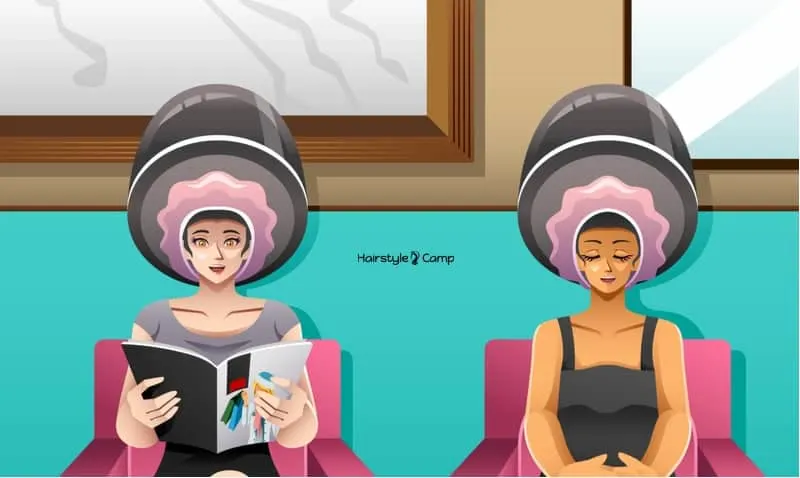If you have naturally curly or kinky hair, you probably understand the importance of effective hair hydration treatment better than anyone. After all, dry curly hair is usually challenging to manage; even when using a wide-toothed comb, the ringlets often separate into frizzy, undefined puffs.
If you adhere to a natural hair hydration routine, your hair will remain moisturized and healthy, and your curls will appear more defined. By selecting products especially formulated to work their way into the cortex of the hair shaft, you can hydrate it from the inside.
Why Natural Hair Needs Hydration Treatment

Whether you’ve been wearing your hair loose and natural or using protective styles to restore its vitality, naturally curly hair often becomes parched and dry. As you design your own method for hydrating natural hair, keep in mind that no two hair textures are exactly alike.
Things to Consider When Deciding on a Hair Hydration Routine
The first step to learning how to hydrate natural hair is deciding which routine and products are best for you. It’s easy to get overwhelmed by all the hair hydration products available on the market, not to mention all the ideas and suggestions on how to keep your natural hair hydrated.
The key to making the right decision begins with having a keen understanding of the unique qualities and characteristics of your own hair. Once you’ve figured that out, narrowing down your choices about products and techniques will become easier.
Think about how the following points apply to your naturally curly hair:
What is Your Hair Porosity?
If you’ve ever spent a small fortune on a brand-new, highly recommended hair moisturizer that ended up doing nothing except for coating the outside of the hair shaft, you’d be wise to learn more about your hair’s porosity.
In a nutshell, your hair’s porosity influences its ability to absorb moisture. The higher the porosity, the more moisture each hair strand can absorb; the lower the porosity, the less moisture it can absorb. Don’t be surprised to learn that the right product isn’t always the most expensive one; it’s the one that can penetrate the hair’s cuticle down to its cortex level.
What Products are Readily Available and Affordable?
It won’t do you any good to discover the perfect hydration treatment for your hair if you’re unable to consistently and dependably find the ingredients or products you need. This is especially true if you plan to use seasonal fruits, such as avocado or banana, that might only be available during certain times of the year.
The same thing goes for choosing exotic hydrating products or ingredients imported from faraway lands. That inexpensive, sweet-smelling cashew nut oil you bought on your Panama vacation likely won’t be easy to find when you run out of it. And if you’re lucky enough to find it closer to home, it definitely won’t be as cheap!
How Much Time Do You Have to Hydrate Your Hair?
Hydrating your hair takes time, so if you’re on a tight schedule, especially during the week or in the evenings, you should use products and techniques that will work faster. Of course, if your schedule permits, you can experiment with products that do a more thorough job but require more time to see positive results.
What Are the Best Hydration Treatments for Natural Hair?
LOC Method
Many people with natural hair use the LOC hydration method, and they aren’t even aware they’re doing it! LOC is a step-by-step process that utilizes three different hair products in a specific order: Liquid + Oil + Cream = LOC.
Step #1 – Liquid
Apply a liquid-based leave-in conditioner or even plain water to wet your hair thoroughly. This first step is by far the most significant because there’s no other way to hydrate hair without the use of water or a water-based product.
Keep in mind that natural 4C hair doesn’t retain moisture as long as other hair textures, so using water or other liquid hydrants alone won’t do the trick. Steps 2 and 3 are essential elements of a successful hair hydration treatment.
Step #2 – Oil
Once the hair is moistened thoroughly with either water or another liquid hydrating product, apply a natural vegetable or nut oil, such as coconut, avocado, or peanut oil. If you’re in a serious bind, you can even use olive oil from your kitchen! This step is essential because oil locks in the moisture your dry hair so desperately needs.
Step #3 – Cream
Since oil and water don’t mix, a moisturizing hair cream is required to act as a further sealant. Hair creams often have a wonderful scent and are perfect for adding extra shine and body. They’re also especially useful for helping natural hair retain curl definition while styling.
Important Note: If your hair is less porous, you can change the order of LOC to LCO. In this case, the liquid is applied first, as normal, and then the cream is applied and allowed to penetrate the hair cuticle. Finally, apply the oil to seal the hair shaft and leave it with a shiny, lustrous appearance. LCO is a great option to use at night before sleeping because the cream and oil have extra time to penetrate and protect your hair.
Steaming the Hair

You’ve heard of steaming your face to open up the pores and get rid of dirt and impurities, but have you ever heard of steaming hair? Get ready to be surprised: steaming is a tried and true method for hydrating dry natural hair.
When you steam your hair, minuscule particles of water soak deep into the hair shaft. At the same time, your scalp’s pores open up, which promotes accelerated natural hair growth without harsh chemical treatments. The result is softer, healthier, and better-looking hair in just about 15 minutes of your time a few days a week.
The other benefit of hair steaming is that the only expense is the purchase of the steamer itself (handheld or hooded); there’s no need to purchase or apply any special oils or creams.
Hydration Masks
Another inexpensive hydration treatment for natural hair is a DIY hydration hair mask. Hydration masks seal in moisture and are easy to make by blending a few simple ingredients available at your local farmer’s market or grocery store. Honey, yogurt, eggs, and fruits — nothing is off limits — but you should make your choices of ingredients based on your hair type. Here are some hair mask ideas using popular and easy to find fruits.
Most hydration masks require only about 30 minutes in your hair. They’re also an environmentally friendly way to beautify and hydrate your natural hair without causing waste or damaging the planet.
Maximum Hydration Method

If you have a lot of extra time (seven consecutive days) and are willing to dedicate energy and money to make sure your natural 4C hair is super-hydrated, then you might want to consider the Maximum Hydration Method. The method creates 4B-like curl textures and helps to reduce frizzy coils.
Most items are easy to find, such as water, baking soda or apple cider vinegar, a quality deep conditioner, and your favorite hair gel or leave-in conditioner (optional). The tricky part is getting your hands on a reliable supply of bentonite clay.
- Deep condition your dry, detangled hair, saturating it from root to tip. Cover hair with a shower cap for 1½-2 hours. Rinse thoroughly with warm water. (See, we told you this method takes time and dedication!)
- Cleanse your wet hair with a solution of water mixed with baking soda (1 tablespoon per 2 cups of water) or apple cider vinegar. Saturate the hair, leave in for 20 minutes, then rinse. (The purpose of this step is to clean your hair without using shampoo, which strips it of its natural moisture).
- Apply bentonite clay and leave on for about 15-20 minutes. For extra moisture and a greater conditioning effect, mix the clay with yogurt, olive oil, or honey.
- Rinse the hair thoroughly with warm water.
- Optional: Apply a leave-in conditioner and seal with a moisturizing hair gel or styling cream.
- Repeat for seven consecutive days. (You’ll begin to see results on the third day.)
Natural Hair Hydration Treatments Summarized
- Hydrate and moisturize your natural 4C hair regularly for improved curl definition and increased manageability.
- If you don’t have time to do a complete hydration routine to keep your natural hair moist and manageable, then at the very least, always use a moisturizing conditioner and leave-in conditioner after every shampooing.
- Ask around to learn about the best natural hair hydration products for your type of hair. If you’re on the street and you see someone with healthy natural hair that’s similar to your hair texture, don’t be shy! Ask them which products they are using and then test them out for yourself.
- Remember the importance of keeping your scalp moist and hydrated. Imagine that your scalp is soil, and your hair is a vine, the healthier the soil, the healthier the vine!
- Try different hydration techniques and methods for natural hair until you find what works best for you. It might take a bit of trial and error, but the research and experimentation will be worth the effort. And just imagine how proud you’ll feel when a stranger comes up to you on the street and asks you how you keep your natural hair looking so vibrant, healthy, soft, and hydrated!
